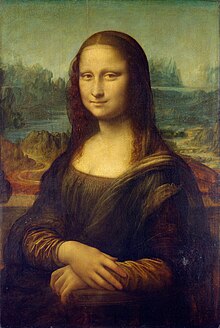
Back فن إيطاليا Arabic İtaliya incəsənəti Azerbaijani ཨི་ཏ་ལི་གྱི་སྒྱུ་རྩལ། Tibetan Italijanska umjetnost BS Art italià Catalan Arte en Italia Spanish Italian taide Finnish Ealaín na hIodáile Irish Talijanska umjetnost Croatian Olaszország művészete Hungarian

Since ancient times, Greeks, Etruscans and Celts have inhabited the south, centre and north of the Italian peninsula respectively. The very numerous rock drawings in Valcamonica are as old as 8,000 BC, and there are rich remains of Etruscan art from thousands of tombs, as well as rich remains from the Greek colonies at Paestum, Agrigento and elsewhere. Ancient Rome finally emerged as the dominant Italian and European power. The Roman remains in Italy are of extraordinary richness, from the grand Imperial monuments of Rome itself to the survival of exceptionally preserved ordinary buildings in Pompeii and neighbouring sites. Following the fall of the Roman Empire, in the Middle Ages Italy remained an important centre, not only of the Carolingian art, Ottonian art of the Holy Roman Emperors, Norman art, but for the Byzantine art of Ravenna and other sites.
Italy was the main centre of artistic developments throughout the Renaissance (1300–1600), beginning with the Proto-Renaissance of Giotto and reaching a particular peak in the High Renaissance of Antonello da Messina, Leonardo da Vinci, Michelangelo and Raphael, whose works inspired the later phase of the Renaissance, known as Mannerism. Italy retained its artistic dominance into the 17th century with the Baroque (1600–1750), and into the 18th century with Neoclassicism (1750–1850). In this period, cultural tourism became a major prop to Italian economy. Both Baroque and Neoclassicism originated in Rome[1][2] and spread to all Western art. Italy maintained a presence in the international art scene from the mid-19th century onwards, with movements such as the Macchiaioli, Futurism, Metaphysical, Novecento Italiano, Spatialism, Arte Povera, and Transavantgarde.
Italian art has influenced several major movements throughout the centuries and has produced several great artists, including painters, architects and sculptors. Today, Italy has an important place in the international art scene, with several major art galleries, museums and exhibitions; major artistic centres in the country include Rome, Florence, Venice, Milan, Turin, Genoa, Naples, Palermo, Syracuse and other cities. Italy is home to 60 World Heritage Sites, the largest number of any country in the world.
- ^ Stevenson, Angus (19 August 2010). Oxford Dictionary of English. OUP Oxford. ISBN 978-0-19-957112-3.
- ^ "The road from Rome to Paris. The birth of a modern Neoclassicism". Archived from the original on 14 July 2015. Retrieved 5 January 2016.